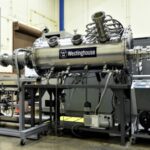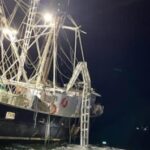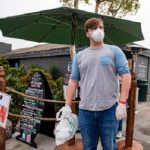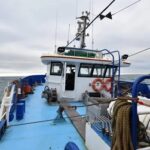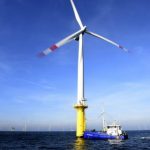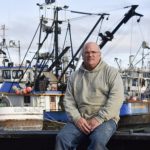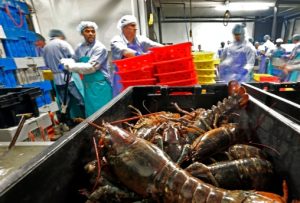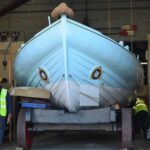Tag Archives: Northeast Fisheries Science Center
‘Sea change:’ NOAA to shift fish surveys to Commercial Fishing Vessels
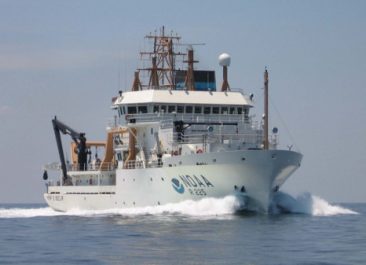 In what one advocate called “a potential sea change” for the commercial fishing industry, NOAA Fisheries announced intentions Tuesday to shift all or part of long-controversial stock surveys from its Bigelow research vessel to commercial boats, saying a transition over the next five years could bring “greater shared confidence” in survey results. “We have to learn to work better with the (commercial fishing) industry — we have to open up better lines of communication,” Dr. Bill Karp, director of NOAA’s Northeast Fisheries Science Center in Woods Hole, said of the transition. Don Cuddy, program director for the Center for Sustainable Fisheries in New Bedford, said fishermen also have felt the Bigelow is unable to accurately count “flatfish,” such as yellowtail flounder, because of the type of gear it tows. “This is going to affect everything across the board — the fishermen have been saying for years that the catch limits and stock assessments do not reflect what they’re seeing on the water,” said Cuddy, who used the “sea change” phrase. Read the story here 15:57
In what one advocate called “a potential sea change” for the commercial fishing industry, NOAA Fisheries announced intentions Tuesday to shift all or part of long-controversial stock surveys from its Bigelow research vessel to commercial boats, saying a transition over the next five years could bring “greater shared confidence” in survey results. “We have to learn to work better with the (commercial fishing) industry — we have to open up better lines of communication,” Dr. Bill Karp, director of NOAA’s Northeast Fisheries Science Center in Woods Hole, said of the transition. Don Cuddy, program director for the Center for Sustainable Fisheries in New Bedford, said fishermen also have felt the Bigelow is unable to accurately count “flatfish,” such as yellowtail flounder, because of the type of gear it tows. “This is going to affect everything across the board — the fishermen have been saying for years that the catch limits and stock assessments do not reflect what they’re seeing on the water,” said Cuddy, who used the “sea change” phrase. Read the story here 15:57
NOAA/NMFS Considers Moving Trawl Surveys to Fishing Vessels
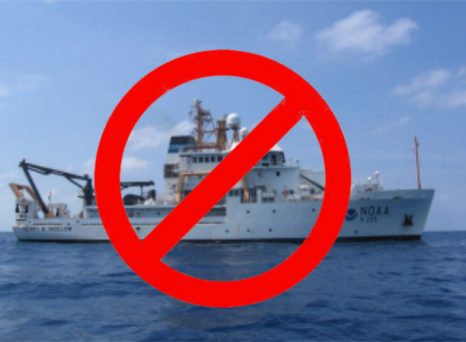 NOAA Fisheries is initiating a planning process to support its intention to transition part or all of the Northeast Fisheries Science Center’s spring and fall bottom trawl surveys from the NOAA Ship Henry B. Bigelow to fishing industry vessels provided that survey data collection quality and time series integrity can be maintained. “The bottom trawl survey is perhaps the most valuable ecological data set that we maintain at the Center,” said Bill Karp, the center’s director. “Those data are critical for many of the fishery stock assessments in the region and are mined by a wide variety of researchers for other purposes. By sharing the responsibility for gathering these data with the fishing industry, I think there will also come greater shared confidence in the results obtained using them.” Read the rest here 17:12
NOAA Fisheries is initiating a planning process to support its intention to transition part or all of the Northeast Fisheries Science Center’s spring and fall bottom trawl surveys from the NOAA Ship Henry B. Bigelow to fishing industry vessels provided that survey data collection quality and time series integrity can be maintained. “The bottom trawl survey is perhaps the most valuable ecological data set that we maintain at the Center,” said Bill Karp, the center’s director. “Those data are critical for many of the fishery stock assessments in the region and are mined by a wide variety of researchers for other purposes. By sharing the responsibility for gathering these data with the fishing industry, I think there will also come greater shared confidence in the results obtained using them.” Read the rest here 17:12
Summer flounder’s new status from “viable” to “concern”reduces allowable catch
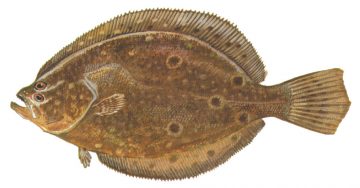 The stock status of most coastal fish did not change in the 2016 N.C. Division of Marine Fisheries Stock Status Report, but one species was reclassified from the 2015 report. Summer flounder moved from “viable” to “concern” based on a 2015 National Marine Fisheries Service Northeast Fisheries Science Center benchmark stock assessment for U.S. waters north of Cape Hatteras. The assessment indicated the stock of summer flounder was not overfished but overfishing was occurring, according to a NCDMF news release. As a result of the stock assessment, federal fisheries authorities lowered the allowable biological catch by 29 percent, which lowered the state-by-state commercial quotas proportionately. North Carolina receives the highest commercial quota share at 27.4 percent. Read the rest here – Read NCDMR Stock Assessment here 14:51
The stock status of most coastal fish did not change in the 2016 N.C. Division of Marine Fisheries Stock Status Report, but one species was reclassified from the 2015 report. Summer flounder moved from “viable” to “concern” based on a 2015 National Marine Fisheries Service Northeast Fisheries Science Center benchmark stock assessment for U.S. waters north of Cape Hatteras. The assessment indicated the stock of summer flounder was not overfished but overfishing was occurring, according to a NCDMF news release. As a result of the stock assessment, federal fisheries authorities lowered the allowable biological catch by 29 percent, which lowered the state-by-state commercial quotas proportionately. North Carolina receives the highest commercial quota share at 27.4 percent. Read the rest here – Read NCDMR Stock Assessment here 14:51
NOAA rejected New Bedford for its Northeast Fisheries Science Center. Why? It makes too much sense!
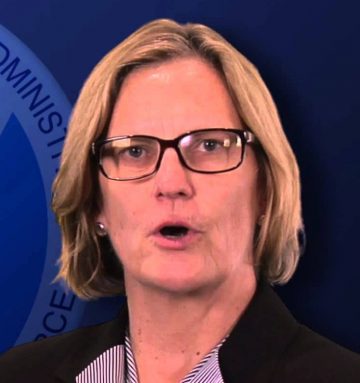 It is no surprise that NOAA has rejected New Bedford as the new site for its Northeast Fisheries Science Center. It makes too much sense. New Bedford Harbor is where it happens for the federal agency, with the heart of the East Coast fishery right here. There is deep-water berthing for its research vessels right here. UMass Dartmouth’s School for Marine Science and Technology, a premiere oceanographic institution, is right here. There are acres of available land both on and nearby the waterfront right here in New Bedford. There are hundreds of fishing vessels that can participate in joint research efforts right here. There is major highway, rail, and regional airport access right here. No, it makes too much sense to move to New Bedford. National Oceanic and Atmospheric Administration officials would rather live and work on Cape Cod, even though their facility is over-crowded, real estate prices are at a premium, and the lack of a sizable berth forces them to dock their research vessel in Newport, Rhode Island. Leave it to a federal agency to choose a more expensive and inefficient means of operation. Leave it to a federal agency to be politically influenced to not choose the best situated, most affordable, and sensible location with the best infrastructure for their new expanded facility. Davis Sullivan, Rochester Link 18:15
It is no surprise that NOAA has rejected New Bedford as the new site for its Northeast Fisheries Science Center. It makes too much sense. New Bedford Harbor is where it happens for the federal agency, with the heart of the East Coast fishery right here. There is deep-water berthing for its research vessels right here. UMass Dartmouth’s School for Marine Science and Technology, a premiere oceanographic institution, is right here. There are acres of available land both on and nearby the waterfront right here in New Bedford. There are hundreds of fishing vessels that can participate in joint research efforts right here. There is major highway, rail, and regional airport access right here. No, it makes too much sense to move to New Bedford. National Oceanic and Atmospheric Administration officials would rather live and work on Cape Cod, even though their facility is over-crowded, real estate prices are at a premium, and the lack of a sizable berth forces them to dock their research vessel in Newport, Rhode Island. Leave it to a federal agency to choose a more expensive and inefficient means of operation. Leave it to a federal agency to be politically influenced to not choose the best situated, most affordable, and sensible location with the best infrastructure for their new expanded facility. Davis Sullivan, Rochester Link 18:15
Crashed $450K scallop survey HabCam is recovered
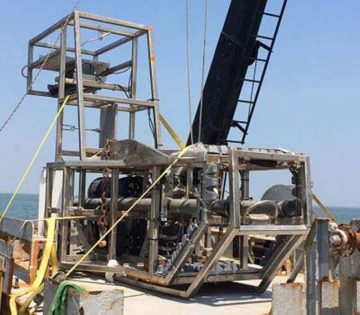 Scientists and crew members aboard a NOAA-chartered research vessel have recovered a $450,000 scallop survey camera that was lost a week ago when it apparently snagged on an underwater shipwreck southeast of Delaware Bay, a NOAA spokesperson said. “We are pleased, relieved, and preparing to move forward with our (scallop) survey for this year,” Susan Gardner, acting deputy director of NOAA Fisheries’ Northeast Fisheries Science Center, said in a press release. The camera appears to have only “minimal damage” on its exterior and is being tested by scientists, NOAA said. Read the rest here 16:04
Scientists and crew members aboard a NOAA-chartered research vessel have recovered a $450,000 scallop survey camera that was lost a week ago when it apparently snagged on an underwater shipwreck southeast of Delaware Bay, a NOAA spokesperson said. “We are pleased, relieved, and preparing to move forward with our (scallop) survey for this year,” Susan Gardner, acting deputy director of NOAA Fisheries’ Northeast Fisheries Science Center, said in a press release. The camera appears to have only “minimal damage” on its exterior and is being tested by scientists, NOAA said. Read the rest here 16:04
Bill Karp, Director of Northeast Fisheries Science Center is retiring
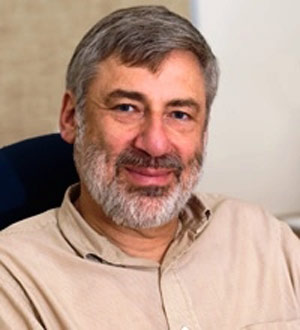 The head of NOAA Fisheries’ Northeast Fisheries Science Center in Woods Hole has announced his retirement in September from federal service after just under four years as head of the center. Bill Karp came to Cape Cod after serving many years in the Alaska Fisheries Science Center, and has 30 years of fisheries research experience. The science centers conduct most of the fisheries research regulators then use to set policies and quotas, and is often in the middle of sharp disagreements between researchers and the commercial fishing industry. Karp is a regular presence at the marathon New England Fisheries Management Council’s meetings. Karp wrote in a retirement announcement that he was honored to have been selected for the position on the Cape and enjoyed working with dedicated and accomplished staff. Read the rest here 19:29
The head of NOAA Fisheries’ Northeast Fisheries Science Center in Woods Hole has announced his retirement in September from federal service after just under four years as head of the center. Bill Karp came to Cape Cod after serving many years in the Alaska Fisheries Science Center, and has 30 years of fisheries research experience. The science centers conduct most of the fisheries research regulators then use to set policies and quotas, and is often in the middle of sharp disagreements between researchers and the commercial fishing industry. Karp is a regular presence at the marathon New England Fisheries Management Council’s meetings. Karp wrote in a retirement announcement that he was honored to have been selected for the position on the Cape and enjoyed working with dedicated and accomplished staff. Read the rest here 19:29
Fishing industry fighting cost of at-sea monitors
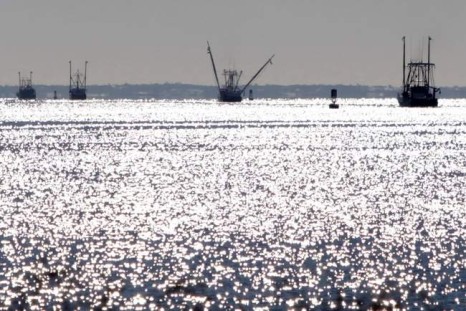 Fishermen are opposing new catch-monitoring costs that could take effect March 1, as a judge’s ruling this week gave the industry a setback in efforts to block the transition from government funding. John Haran of Dartmouth, manager of a local fishery sector, said in December that transferring the regulatory costs to the fishing industry could put more than 40 local groundfishing boats out of business. Local fishing industry tycoon Carlos Rafael said the costs — potentially about $700 per monitored trip — could mean repeated expenses of $14,000 across 20 groundfishing boats in his fleet. Read the article here 07:50
Fishermen are opposing new catch-monitoring costs that could take effect March 1, as a judge’s ruling this week gave the industry a setback in efforts to block the transition from government funding. John Haran of Dartmouth, manager of a local fishery sector, said in December that transferring the regulatory costs to the fishing industry could put more than 40 local groundfishing boats out of business. Local fishing industry tycoon Carlos Rafael said the costs — potentially about $700 per monitored trip — could mean repeated expenses of $14,000 across 20 groundfishing boats in his fleet. Read the article here 07:50
Mayor Jon Mitchell: New Bedford would be great home for Northeast Fisheries Science Center
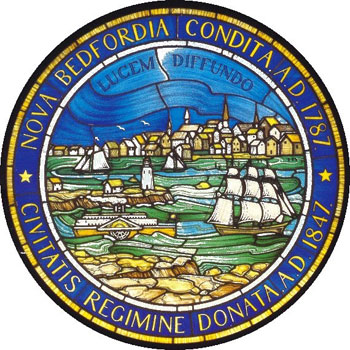 If NOAA Fisheries should decide to move the Northeast Fisheries Science Center out of Woods Hole, Mayor Jon Mitchell said New Bedford would be just right for a new home. Mitchell calls the city “the best place in the Northeast by far.” For about a year, the Commerce Department, which contains NOAA, has been assessing the adequacy and the condition of the various buildings that constitute the laboratory. NOAA spokeswoman Teri Frady said repairs, renovations or replacement are all possible options and any definitive direction is still a long way off. Read the article here 08:00
If NOAA Fisheries should decide to move the Northeast Fisheries Science Center out of Woods Hole, Mayor Jon Mitchell said New Bedford would be just right for a new home. Mitchell calls the city “the best place in the Northeast by far.” For about a year, the Commerce Department, which contains NOAA, has been assessing the adequacy and the condition of the various buildings that constitute the laboratory. NOAA spokeswoman Teri Frady said repairs, renovations or replacement are all possible options and any definitive direction is still a long way off. Read the article here 08:00
Falmouth selectmen support keeping Northeast Fisheries Science Center in Woods Hole
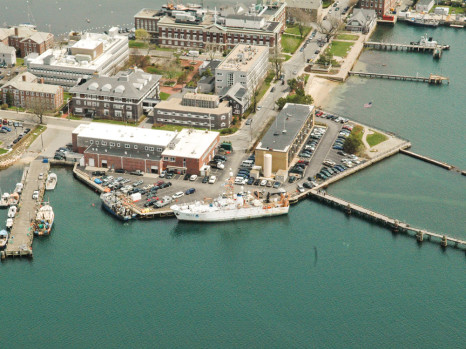 The Northeast Fisheries Science Center facility in Woods Hole was built before men walked on the moon and is due for an upgrade — but whether that happens at its current home in the village remains to be seen. The National Oceanographic and Atmospheric Administration and Department of Commerce are doing a facilities study on the Woods Hole campus, which dates to 1961 and houses both research and administrative facilities. NOAA spokeswoman Teri Frady said repairs, renovations or replacement are all possible options, but any definitive direction is still a long way off. Read the article here 12:36
The Northeast Fisheries Science Center facility in Woods Hole was built before men walked on the moon and is due for an upgrade — but whether that happens at its current home in the village remains to be seen. The National Oceanographic and Atmospheric Administration and Department of Commerce are doing a facilities study on the Woods Hole campus, which dates to 1961 and houses both research and administrative facilities. NOAA spokeswoman Teri Frady said repairs, renovations or replacement are all possible options, but any definitive direction is still a long way off. Read the article here 12:36
Northeast Fisheries Science Center say’s key fishing area for Atlantic cod in dire shape
New data from the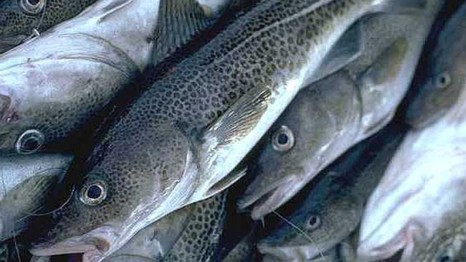 says research boats caught less of the fish this past spring than in all but one spring season dating back to 1968. A report from the centre, given to The Associated Press on Tuesday, states that the boats caught about 3.3 pounds of cod each time the net went in and out of the water last spring, compared to more than three times that amount two years earlier. “Is that coming as a surprise from anybody who knows what the water temperature is out there? No, it shouldn’t be,” said David Goethel, a New Hampshire-based fisherman. “These fish are declining because of climate change.” Read the rest here 22:13
says research boats caught less of the fish this past spring than in all but one spring season dating back to 1968. A report from the centre, given to The Associated Press on Tuesday, states that the boats caught about 3.3 pounds of cod each time the net went in and out of the water last spring, compared to more than three times that amount two years earlier. “Is that coming as a surprise from anybody who knows what the water temperature is out there? No, it shouldn’t be,” said David Goethel, a New Hampshire-based fisherman. “These fish are declining because of climate change.” Read the rest here 22:13
Sharks Numbers In East Coast At Record High Says NOAA Survey
 There are now more sharks off the U.S. East Coast than there have been in a generation, new research suggests. Scientists conduct the survey by putting out baited lines at a series of locations along the East Coast. When they repeat it, every two to three years, they return to these same spots and use the same techniques, Natanson says. To catch sharks, they put out a 2-mile-longline for three hours, and reel it in. They then measure and weigh the sharks that are small enough to be brought aboard, and tag them. Larger sharks must be put into a sling alongside the boat, and then they measure or estimate its length, Natanson says. Read the rest here 10:11
There are now more sharks off the U.S. East Coast than there have been in a generation, new research suggests. Scientists conduct the survey by putting out baited lines at a series of locations along the East Coast. When they repeat it, every two to three years, they return to these same spots and use the same techniques, Natanson says. To catch sharks, they put out a 2-mile-longline for three hours, and reel it in. They then measure and weigh the sharks that are small enough to be brought aboard, and tag them. Larger sharks must be put into a sling alongside the boat, and then they measure or estimate its length, Natanson says. Read the rest here 10:11
NOAA/NMFS begins fence-mending with Northeast fishermen – After they killed most of them off!
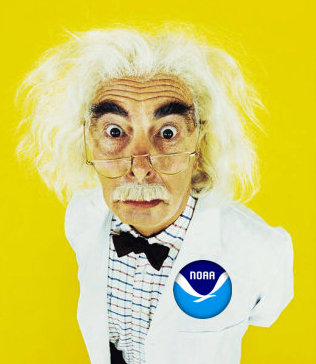 NOAA/NMFS this week undertook an effort to build trust and cooperation from the New England fishing industry by including the industry in upcoming groundfish stock assessments. Dr. Kevin Stokesbury (SMAST) is concerned about the inaccuracy of the various computer models being used to evaluate trends from year to year. As those who attend fisheries council meetings know all too well, the models regularly show discrepancies from one year to the next. These “retrospective patterns” are corrected by amending previous years’ estimates, which indicate an ongoing problem with the models, Stokesbury said. Read the rest here 07:55
NOAA/NMFS this week undertook an effort to build trust and cooperation from the New England fishing industry by including the industry in upcoming groundfish stock assessments. Dr. Kevin Stokesbury (SMAST) is concerned about the inaccuracy of the various computer models being used to evaluate trends from year to year. As those who attend fisheries council meetings know all too well, the models regularly show discrepancies from one year to the next. These “retrospective patterns” are corrected by amending previous years’ estimates, which indicate an ongoing problem with the models, Stokesbury said. Read the rest here 07:55
HabCamV4 sees large numbers of young scallops off Delaware Bay
 “We’re seeing many swimming scallops and other behaviors that are providing insights into how the animals live and interact in that environment,” Hart said. “Baby scallops are seen attached to adults, and other scallops are swimming above the bottom, perhaps to diffuse to areas that are less dense and provide more room to grow.” The NEFSC’s annual sea scallop survey is conducted in three segments or “legs,” each ranging from 11 to 14 days, between May and July, beginning with the Mid-Atlantic Bight, then Southern New England and ending on Georges Bank. Read the rest here 15:10
“We’re seeing many swimming scallops and other behaviors that are providing insights into how the animals live and interact in that environment,” Hart said. “Baby scallops are seen attached to adults, and other scallops are swimming above the bottom, perhaps to diffuse to areas that are less dense and provide more room to grow.” The NEFSC’s annual sea scallop survey is conducted in three segments or “legs,” each ranging from 11 to 14 days, between May and July, beginning with the Mid-Atlantic Bight, then Southern New England and ending on Georges Bank. Read the rest here 15:10
Scientists, Fishing Fleet Team Up To Save Cod — By Listening
 In the ocean off of Massachusetts, an unlikely alliance of scientists and fishermen is on a quest. They’re looking for mating codfish. The goal is not only to revive a depleted fish population, but to save an endangered fishing community as well. Frank Mirarchi, a fisherman in the area for 52 years, was one of those who came forward. “We know the fish are spawning somewhere in this fairly large area of several hundred square miles,” he told the scientists. “Help us find out where.” “We’re trying to fish but not catch cod,” says Mirarchi. “That’s the new strategy.” Read the rest here 08:20
In the ocean off of Massachusetts, an unlikely alliance of scientists and fishermen is on a quest. They’re looking for mating codfish. The goal is not only to revive a depleted fish population, but to save an endangered fishing community as well. Frank Mirarchi, a fisherman in the area for 52 years, was one of those who came forward. “We know the fish are spawning somewhere in this fairly large area of several hundred square miles,” he told the scientists. “Help us find out where.” “We’re trying to fish but not catch cod,” says Mirarchi. “That’s the new strategy.” Read the rest here 08:20
Northeast Fisheries Science Center to Step Up Partnerships for Better Fishery Resource Surveys
 “We understand the impacts that poor stock conditions have on local economies and the lives of those involved in the fisheries,” said NOAA
“We understand the impacts that poor stock conditions have on local economies and the lives of those involved in the fisheries,” said NOAA Fisheries’ NEFSC director Bill Karp. “We face many challenges in better understanding the dynamics of all of our regional stocks, especially as we see increasing effects of climate change throughout the region. We cannot meet these challenges alone, so we are strengthening our collaborative relationships with industry, our academic partners, and other stakeholders,” he said. Read the rest here 14:02
NEFSC Conducting Protected Species Program Review April 13-16 in Woods Hole, MA
 Science programs at NOAA’s Northeast Fisheries Science Center that support protected species conservation and management in the Northeast will be peer reviewed at the Center’s facility in Woods Hole, MA April 13-16, 2015. The species involved include whales, small cetaceans, seals, and sea turtles, as well as fish populations that fall under provisions of the federal Endangered Species Act. Click here for more information on the meeting, including logistics and meeting materials. Read the notice here 13:46
Science programs at NOAA’s Northeast Fisheries Science Center that support protected species conservation and management in the Northeast will be peer reviewed at the Center’s facility in Woods Hole, MA April 13-16, 2015. The species involved include whales, small cetaceans, seals, and sea turtles, as well as fish populations that fall under provisions of the federal Endangered Species Act. Click here for more information on the meeting, including logistics and meeting materials. Read the notice here 13:46Sea scallop surveys under scrutiny during upcoming NOAA conference
Three intensive days of meetings to evaluate ways of  have been scheduled for mid-March in New Bedford,
have been scheduled for mid-March in New Bedford, NOAA Fisheries NMFS announced. Among those participating will be Dr. Kevin Stokesbury, who developed the drop-camera method of directly counting scallops on the sea floor. The method upended assumptions about scallop populations and transformed the industry into the success it has been for many years. Read the rest here Review of Sea Scallop Survey Methodologies and Their Integration for Stock Assessment and Fishery Management Read the notice here 09:27
Our view: Bridging NOAA’s credibility gap
 Bill Karp, director of the Northeast Fisheries Science Center, should have a chance later this week to bridge some fundamental gaps in trust and credibility when he delivers a report on NOAA Fisheries’ stock assessment process and scientific models program. To his credit, he concedes the enormous disconnect between what NOAA Fisheries has found in its stock assessments and what fishermen see every day on the water is a significant problem. Read the rest here 11:26
Bill Karp, director of the Northeast Fisheries Science Center, should have a chance later this week to bridge some fundamental gaps in trust and credibility when he delivers a report on NOAA Fisheries’ stock assessment process and scientific models program. To his credit, he concedes the enormous disconnect between what NOAA Fisheries has found in its stock assessments and what fishermen see every day on the water is a significant problem. Read the rest here 11:26
Fishery science dispute front and center at storm shortened NEFMC meetings
![]() The New England Fishery Management Council cancelled Tuesday’s session of the upcoming meetings in Portsmouth, N.H., but still holds out hope it will be able to squeeze much of the three-day agenda into Wednesday afternoon and Thursday. If that is the case, the final item could be the most contentious: Northeast Fisheries Science Center Director Bill Karp’s report on NOAA Fisheries’ stock assessment process and modeling program. Read the rest here 11:45
The New England Fishery Management Council cancelled Tuesday’s session of the upcoming meetings in Portsmouth, N.H., but still holds out hope it will be able to squeeze much of the three-day agenda into Wednesday afternoon and Thursday. If that is the case, the final item could be the most contentious: Northeast Fisheries Science Center Director Bill Karp’s report on NOAA Fisheries’ stock assessment process and modeling program. Read the rest here 11:45
Report Report on the Economic Performance of the Northeast Multispecies (Groundfish) Fishery (May 2013 – April 2014)
 The Northeast Fisheries Science Center (the fish stock assessment people) has issued an annual report on the economic performance of the fishery since 2010. The results provide indicators of vessel performance, employment, financial viability, and fleet diversity. Unlike the 2010-2013 reports, this year’s uses constant dollars (nominal dollars adjusted for inflation using 2010 as the base year) for information reported in dollars so that figures may be better compared over time. Read the bad news here 13:23
The Northeast Fisheries Science Center (the fish stock assessment people) has issued an annual report on the economic performance of the fishery since 2010. The results provide indicators of vessel performance, employment, financial viability, and fleet diversity. Unlike the 2010-2013 reports, this year’s uses constant dollars (nominal dollars adjusted for inflation using 2010 as the base year) for information reported in dollars so that figures may be better compared over time. Read the bad news here 13:23
Fishermen get an education on all the most desired schools
 Last week, 25 commercial and for-hire recreational fishermen, along with industry participants, went to school to learn about fish populations — how they grow, what impacts them and how we can keep them at maximum sustainable yield levels. The session focused on science issues as they relate to fisheries. Read the rest here 07:54
Last week, 25 commercial and for-hire recreational fishermen, along with industry participants, went to school to learn about fish populations — how they grow, what impacts them and how we can keep them at maximum sustainable yield levels. The session focused on science issues as they relate to fisheries. Read the rest here 07:54
Potential closures for scallop fishery – may be affected by the New England Fishery Management Council’s Omnibus Habitat Amendment 2
 Scallopers still may be affected by the New England Fishery Management Council’s Omnibus Habitat Amendment 2 when it goes into effect next year. While lobster gear currently is not included in the list of gear potentially affected by the amendment, the possibility remains open that this could change as a result of public input and any supporting scientific information. The Council plans to work with the , NOAA’s Northeast Fisheries Science Center and the coastal states in the Northeast on this issue. Read the rest here 14:37
Scallopers still may be affected by the New England Fishery Management Council’s Omnibus Habitat Amendment 2 when it goes into effect next year. While lobster gear currently is not included in the list of gear potentially affected by the amendment, the possibility remains open that this could change as a result of public input and any supporting scientific information. The Council plans to work with the , NOAA’s Northeast Fisheries Science Center and the coastal states in the Northeast on this issue. Read the rest here 14:37
Northeast Fisheries Science Center – Distribution of Fish on the Northeast U.S. Shelf Influenced by both Fishing and Climate
 The four species studied– black sea bass, scup, summer flounder, and southern New England/Mid-Atlantic Bight winter flounder – have varied in abundance and have experienced heavy fishing pressure at times over the past 40 years. Scientists examined the distribution of the four species,,, Read the rest here 16:57
The four species studied– black sea bass, scup, summer flounder, and southern New England/Mid-Atlantic Bight winter flounder – have varied in abundance and have experienced heavy fishing pressure at times over the past 40 years. Scientists examined the distribution of the four species,,, Read the rest here 16:57
Waters Warm, and Cod Catch Ebbs in Maine
 In the vast gulf that arcs from Massachusetts’s shores to Canada’s Bay of Fundy, cod was once king.,,“A fisherman’s job isn’t to get an unbiased estimate of abundance. It’s to catch fish,” said Michael Fogarty, the chief of the ecosystem assessment program at the Northeast Fisheries Science Center of the National Oceanic and Atmospheric Administration, the federal agency that monitors sea life. “The world they see is a different world than we see in the surveys.”. Read the rest here 09:48
In the vast gulf that arcs from Massachusetts’s shores to Canada’s Bay of Fundy, cod was once king.,,“A fisherman’s job isn’t to get an unbiased estimate of abundance. It’s to catch fish,” said Michael Fogarty, the chief of the ecosystem assessment program at the Northeast Fisheries Science Center of the National Oceanic and Atmospheric Administration, the federal agency that monitors sea life. “The world they see is a different world than we see in the surveys.”. Read the rest here 09:48
How does the government count the fish? Questions of Validity
 There are a lot of fish in the sea. How to count them? It is, surprisingly, one of the hottest questions in New England public life these days. Scientists and environmentalists have offered broad rebuttals to Baker and the fishermen in the news media, often blaming the problem on decades of overfishing. But there has been little detailed discussion of how the federal government actually counts fish and how reliable its numbers are. Read the rest here 08:36:11
There are a lot of fish in the sea. How to count them? It is, surprisingly, one of the hottest questions in New England public life these days. Scientists and environmentalists have offered broad rebuttals to Baker and the fishermen in the news media, often blaming the problem on decades of overfishing. But there has been little detailed discussion of how the federal government actually counts fish and how reliable its numbers are. Read the rest here 08:36:11
Researchers discover ‘spectacular’ coral formations in the Gulf of Maine – Video
 Long known as a place rich in seafood, the Gulf of Maine also is home to “spectacular” formations of deep sea corals, scientists have discovered. Researchers using a remotely controlled submersible vehicle this summer found “dense hanging gardens” Read the rest here 18:01
Long known as a place rich in seafood, the Gulf of Maine also is home to “spectacular” formations of deep sea corals, scientists have discovered. Researchers using a remotely controlled submersible vehicle this summer found “dense hanging gardens” Read the rest here 18:01
The First Indicator – Looking Back. The 2nd indicator, looking forward.
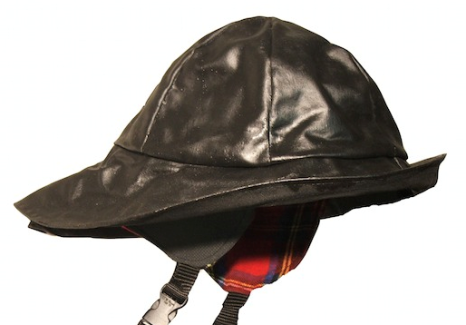 Let me say first off, no one ever accused me of being smart, not even me. I learned at an early age what a stupid son of a bitch was, and I learned it the hard way.,, “This is pretty dire,” said Russell Brown, deputy science and research director of the Northeast Fisheries Science Center, the branch of NOAA that did the research. Warning! Savory language ahead. Not to be read if offended easily! Read more here 09:06
Let me say first off, no one ever accused me of being smart, not even me. I learned at an early age what a stupid son of a bitch was, and I learned it the hard way.,, “This is pretty dire,” said Russell Brown, deputy science and research director of the Northeast Fisheries Science Center, the branch of NOAA that did the research. Warning! Savory language ahead. Not to be read if offended easily! Read more here 09:06
2 for the Price of One from El Globo! Gulf of Maine’s cod stock falling, study says – Gulf of Maine Cod Stock at All-Time Low
The cod population in the Gulf of Maine is plummeting more steeply than previously thought, according a new assessment by the federal agency that monitors the fishing industry. Underwater surveys conducted by the National Oceanic and Atmospheric Administration estimated that the iconic species has dwindled to as little as 3 percent of what it would take to sustain a healthy population. Read more here Gulf of Maine Cod Stock at All-Time Low Read more here 16:15
Didja Ever Notice NOAA Drops the Bad News on Friday Afternoon, Then gets Outta Dodge for the Weekend?
 Statement Regarding New Information Showing Continued Decline of Gulf of Maine Cod Stock Click here to read statement from
Statement Regarding New Information Showing Continued Decline of Gulf of Maine Cod Stock Click here to read statement from NOAA Northeast Fisheries Science Center 15:45
Scott Lang – Northeast Fisheries Science Center cannot ignore other fishery data
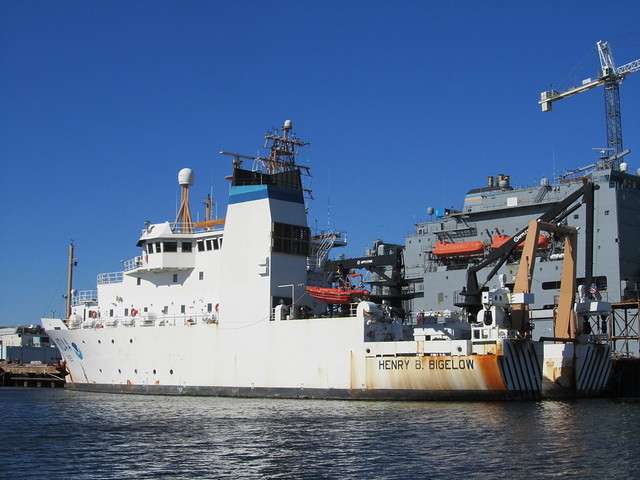 From the article: Prior to the June meeting, NEFSC hosted an “empirical approach” TRAC Yellowtail Benchmark meeting in April to “evaluate all relevant data sources with respect to their support for alternative hypotheses on stock status and . . . their directional impact on catch advice.” With NEFSC pledging that the “empirical approach” meeting would be new, innovative, inclusive, and transparent, there was much hype leading up to the April “Empirical Approach” meeting. NEFSC has been criticized in the past for a lack of transparency,,, Read more here 17:41
From the article: Prior to the June meeting, NEFSC hosted an “empirical approach” TRAC Yellowtail Benchmark meeting in April to “evaluate all relevant data sources with respect to their support for alternative hypotheses on stock status and . . . their directional impact on catch advice.” With NEFSC pledging that the “empirical approach” meeting would be new, innovative, inclusive, and transparent, there was much hype leading up to the April “Empirical Approach” meeting. NEFSC has been criticized in the past for a lack of transparency,,, Read more here 17:41

































